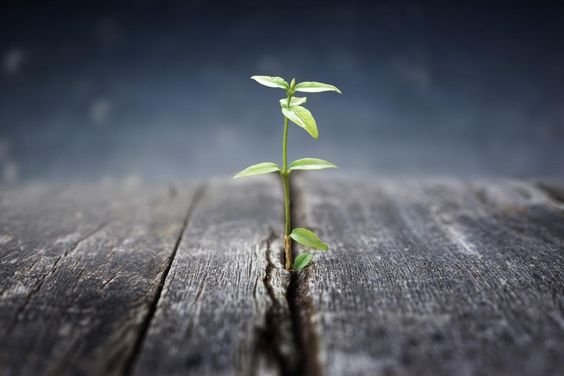Brussels sprouts, with their stalks full of tiny cabbages, can be grown in nearly any USDA Zone. However, the planting time per zone may vary, as may the amount of water it needs and the degree of heat protection you’ll need to implement.
Timing is crucial when planting Brussels sprouts. Along with being cognizant of seasonal changes, gardeners must keep young starts from succumbing to heat and dryness, and let the “sprouts” get lightly kissed by the cold without them freezing before harvest time.
In theory, you could plant them indoors and, if you have a long cool spring, harvest before the weather gets warm. But their flavor and the firmness of the little heads are generally improved by increasingly cold weather.
Growing From Seed
For planting dates, plan backward from when cold weather will keep this cool-weather crop happy, but beware of freezing temperatures.
To start seeds indoors, choose a cool location, and do not use a heat mat. Once the seeds germinate, keep them under a grow light. The University of Minnesota Extension recommends giving seedlings some half-strength starter food and, once the plants have 4-5 true leaves, bringing them outdoors gradually, exposing them to more sunlight and wind each day.
We do not recommend direct seeding because it adds up to three weeks before harvest time. If you do choose this route, plant seeds a quarter- to a half-inch deep and 18 inches apart, water thoroughly, and protect the young plants from wind and pests with a lightweight, securely anchored row cover.

Growing From a Starter and Transplanting
Dig individual holes or a furrow, just deep enough so the plant is at the same level as in its container, and plant the seedlings 18 inches apart. If you are growing multiple rows, they should be about 3 feet apart.
Brussels Sprouts Plant Care
Brussels sprouts are hardy and provide the goodness of leafy greens much further into the colder seasons than most vegetables—yet they have the same plant care requirements and challenges as other cole crops.
Light, Soil, and Nutrients
Brussels sprouts need full sunlight for 6-8 hours, even though they do not like the heat.
Similar to the rest of the cole family, Brussels sprouts should not be planted in the same plot where other relatives have been grown recently. They require crop rotation over a 2-4 years cycle to avoid diseases and pests. Brussels sprouts require well-drained, fertile soil.
Water and Temperature
Brussels sprouts thrive on consistent irrigation or rain to form their tasty mini-cabbages. Frequent watering keeps the plants from becoming too bitter, dry, or poorly formed.
If they don’t get an inch of rain each week, give them a weekly soaking of the same amount (about 5 gallons or two hours). If you grow on drier land or if there is a warm/dry spell while plants are young, you may need to water more than once a week.
Monitor the temperature, as well. If Brussels sprouts grow during weather that is too warm, especially toward harvest time, they will form fluffy tufts of leaves rather than the firm, cabbage-like mini-heads.
Brussels Sprouts Varieties
Like many plants, Brussels sprouts are categorized by their different varieties.
Jade Cross is compact with bite-sized sprouts. This type is early to mature, meaning that it can be planted a bit later in the fall. It is also heat-tolerant, helping the sprouts form compact heads rather than scruffy bunches of leaves.
Ruby Crunch, Red Rubine, and Red Bull look like tiny purple cabbages and have the same antioxidants that go along with purple pigments in other foods. Purple varieties tend to be stronger tasting but sweeter.
Introduced in the 1890s, Long Island Improved is open-pollinated and frost-resistant and is appreciated for its heavy yields.
How to Harvest Brussels Sprouts
Brussels sprout plants will mature about or less than a hundred days after transplanting. To ensure a well-distributed stalk of fairly even-sized sprouts, try trimming lower leaves as the plants grow, and topping off the plants 4-6 weeks before harvesting, when the lower buds are only a half-inch in diameter; this will stop the plant’s vertical growth and redirect its energy to the part we eat.
This step is especially important if you plan to harvest whole stalks. If you are harvesting individual sprouts instead, note that the sprouts mature from the bottom up. Start picking the lower sprouts when they are about one inch in diameter, firm, and vividly colored, whether green or purple.








